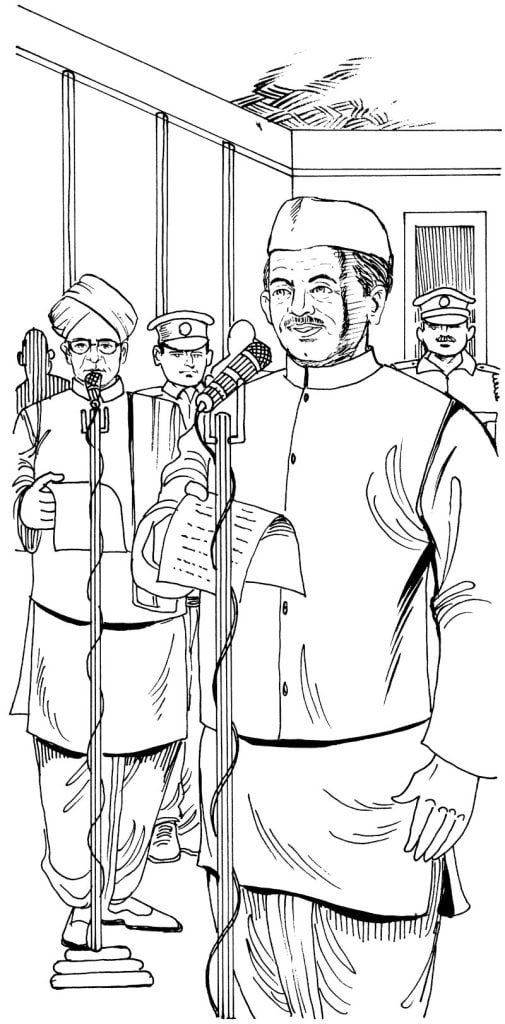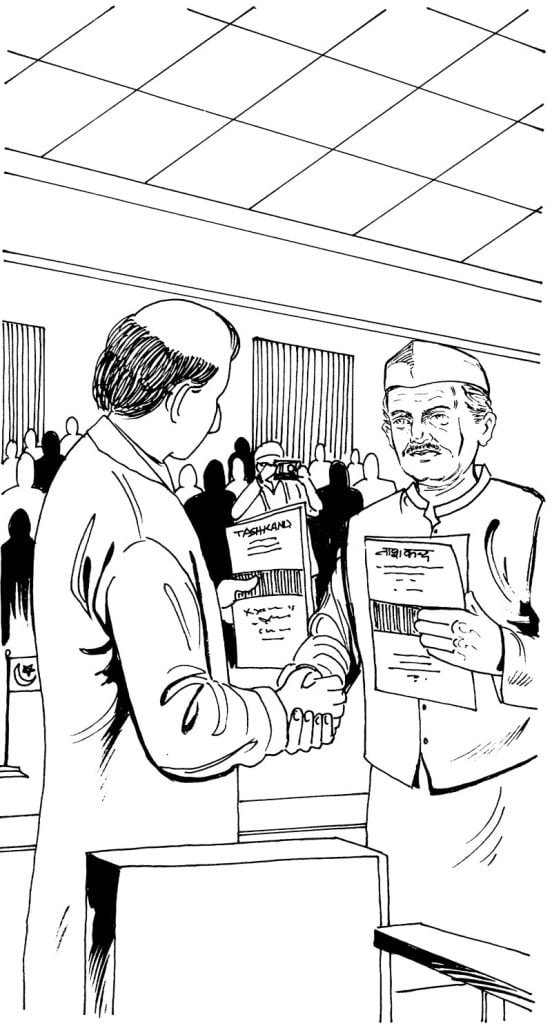Prime Minister Jawahar Lal Nehru passed away on May 27, 1964. The country was plunged in grief. A gloom descended on the people. Nehru was a towering leader whose popularity was unprece- dented. No one could fill the void left by him.
An uncertain future stared into the face of the nation. No clear No. 2 had emerged during his lifetime. The Congress party itself was confused.
After long parleys the consensus finally emerged on the name of Lal Bahadur Shastri. He had no enemies and had a proven record. Perhaps he was also the choice of Jawahar Lal Nehru. Just before his death he had asked Shastri to prepare to take part in Commonwealth Conference on his behalf. After all Shastri was his most trusted lieutenant. But could he meet the challenges of the top job? There was no clear answer.
When Shastri took charge India was not in a happy position. Chinese aggression had sent down the ratings of India in the eyes of the international community and it was seen as a weak confused nation. Other countries were rubbing their hands to take advantage of the situation.

Pakistan was running down India as a mob of vegetable eating jokers who were incapable of achieving anything.
The country was woefully short in food grain production and it survived on the imported food grains.
Pakistan was calling for Indian Muslims to revolt. Then General Ayub Khan was the president of Pakistan. He thought that he could bully the little man of India.
To make India’s position clear Shastri visited Russia, Egypt, Canada and Britain. He explained India’s stand in ‘Non-aligned Meet’ too. Meanwhile, General Ayub had made up his mind to test India’s will to fight a war.
Pakistani army crossed over into Rann of Kutch in Gujarat in April-May, 1965. It shocked Shastri but he took quick decision. Indian army retaliated and pushed the enemy back. To avoid war both sides agreed on cease-fire and signed a pact.
But it was a trick Pakistan had played to make India lower its guard.
It secretly sent its army in Kashmir disguised as local rebels in September, 1965. Pak army invaded Chhamb area. Indian army was under pressure. To release the pressure Shastri ordered Indian army to cross the international borders and march towards Pakistani city of Lahore. A full scale war broke out on the western borders.
USA was trying to help Pakistan. To put pressure on India it threatened to cut off grain supplies to India. Shastri countered this move by calling upon the countrymen to cultivate every available piece of land and miss a meal every weak. He gave the nation slogan ‘Jai Jawan Jai Kisan’.
To Pakistan’s help China also came forward and accused India of amassing troops on its borders and putting up some military installations inside the Chinese territory. Lal Bahadur Shastri called this claim a blatant lie.
Meanwhile the Security Council of UNO called upon India and Pakistan to stop the war. Both the countries announced cease-fire unilaterally. By now Indian army had occupied large chunks of Pakistani areas in Sindh and Pakistan besides Pakistan occupied Kashmir.

On the invitation of Russian Premier Kosygin Lal Bahadur Shastri and Ayub Khan agreed to meet in Tashkent and work out a treaty for peace.
The meeting was held on January 4, 1966.
The peace agreement was signed according to which both the countries were to withdraw their armies to the positions held before the start of hostilities. It included the area seized in Pakistan occupied Kashmir which India always claimed to be integral part of its territory.
Shastri was not willing to withdraw forces from Pak occupied Kashmir because it was a part of India. When Indian army had liberated Hazi Peer Shastri had declared that the territory would be integrated into India.
But during the talks a great international pressure was brought upon Lal Bahadur Shastri to make him yield on the point. Finally he had to give in for the sake of the peace.
The people in India were not happy. He himself didn’t feel any good about it.
When Shastri talked to his family members they also said that withdrawal was not the right thing to agree upon. It deeply hurt him and made him mentally very upset.
The joint declaration was signed on 10th January, 1966. He appeared to be depressed and in pain.
He died the same night at 1 O’clock.
The news shocked the country. His wife, mother and children were grief stricken and inconsolable.
His mortal remains were brought back to India by a plane. Kosygin came along. His funeral was performed on the bank of Yamuna. His memorial in Delhi is known as ‘Vijay Ghat’.
Lal Bahadur Shastri left behind a legacy of honesty and simplicity in high places.
The President of India conferred ‘Bharat Ratna’ posthumously on him.

